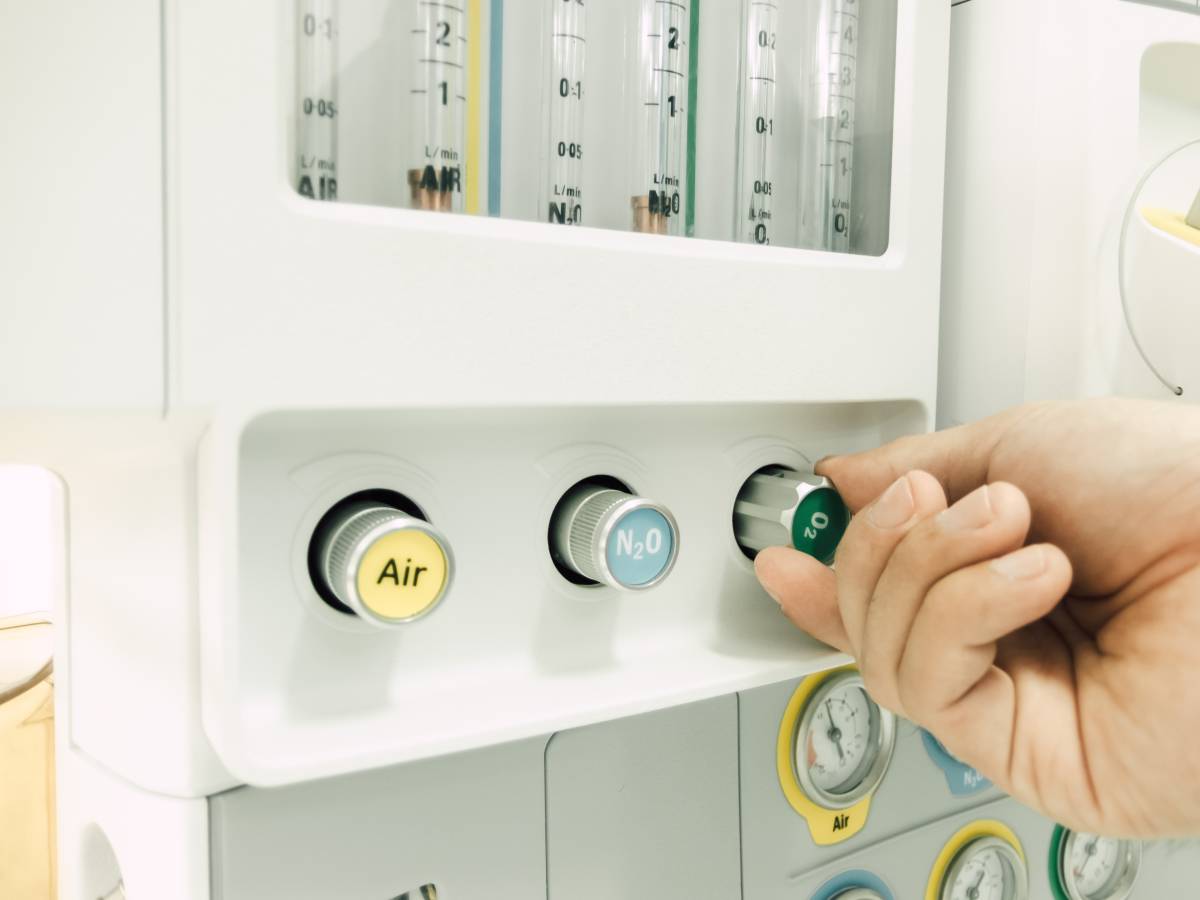Proper management of waste anesthesia gases is essential for ensuring the safety of healthcare workers, particularly in operating rooms where volatile anesthetic agents are used. Failure to scavenge these gases can pose significant health risks to anesthesiologists, nurses, and surgical staff. Exposure to waste anesthetic gases has been linked to a range of adverse effects, from minor symptoms like headaches and dizziness to more severe conditions such as reproductive disorders and chronic renal or liver disease (1). To protect against these consequences, effective waste anesthesia gas scavenging systems are vital not only for regulatory compliance, but also for occupational health and safety in the healthcare setting.
Waste anesthesia gases can be removed from the OR through active or passive scavenging strategies. Active systems utilize a vacuum to extract waste gases from the breathing space of healthcare workers and vent them outside the building, ensuring that the concentration of anesthetic gases in the operating room remains below recommended exposure limits (2). While both passive and active scavenging systems can be effective, active scavenging systems are generally more reliable and efficient in maintaining low levels of waste anesthesia gas exposure. Additionally, maintaining anesthesia delivery systems and scavenging equipment and routinely testing them for leaks and proper system function are key strategies to ensure safety. Tests should include the verification of the correct connection of scavenging system components and ensure that the vacuum level is adequate to remove waste gases without interfering with the patient’s breathing circuit (3).
Proper education and training of healthcare workers is also crucial in minimizing the risks associated with exposure to waste anesthesia gases. Staff should be trained on the correct use of anesthesia equipment, the importance of scavenging waste gases, and the potential health risks associated with exposure. Additionally, they should be educated on how to respond to leaks or malfunctions in the scavenging system (4).
Innovative technologies and practices can also contribute to more effective waste anesthesia gas scavenging. For instance, the use of low-flow or minimal-flow anesthesia techniques can reduce the amount of anesthetic gas used, thereby decreasing the volume of waste gases produced (4). Additionally, the adoption of newer, less volatile anesthetic agents can contribute to reducing the overall exposure to waste gases. To further enhance the effectiveness of waste gas scavenging systems, healthcare facilities can implement continuous monitoring of air quality in operating rooms. This involves using sophisticated sensors and alarm systems to detect elevated levels of waste gases, enabling immediate response to potential leaks or system failures. Regular training sessions and drills for operating room staff can also ensure that everyone is prepared to act swiftly in case of an emergency, minimizing exposure to harmful gases.
The effective scavenging of waste anesthesia gases requires a comprehensive approach that combines the use of appropriate scavenging systems, regular maintenance and testing, education and training, and the adoption of innovative practices. By applying these strategies, healthcare facilities can significantly reduce the health risks associated with waste gas exposure and create a safer working environment for their staff.
References
1. Hoerauf KH, Koller C, Jakob W, Taeger K. Scavenging of waste anesthetic gases in different hospital environments. Anesthesiology. 1996;85(5):980-985.
2. Byhahn C, Wilke HJ, Westphal K. Occupational exposure to volatile anaesthetics: epidemiology and approaches to minimising the problem. CNS Drugs. 2001;15(3):197-215.
3. Tan PC, Andriati A, Wahjuprajitno B. Management of waste anesthetic gases: where do we stand? Journal of Anesthesia. 2016;30(4):677-685.
4. McGain F, McAlister S. Environmental sustainability in anesthesia: waste anesthetic gas. Anesthesiology Clinics. 2019;37(3):567-580.
